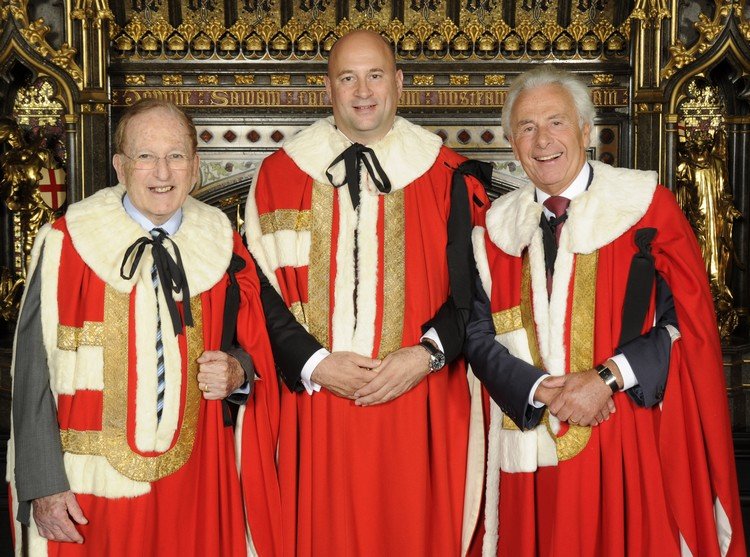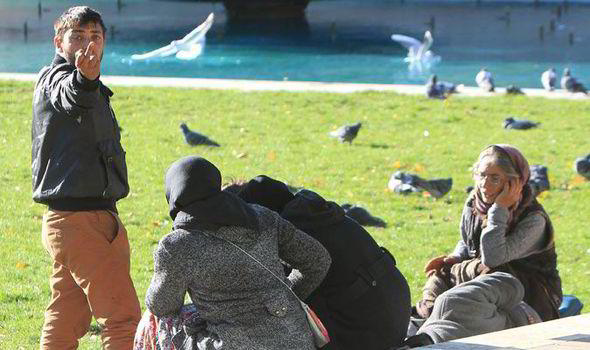The Knockout Game, as the whole world is starting to learn, is an activity engaged in by groups of Black “youths” whereby they attempt to sucker punch a lone victim, usually someone of another racial group and therefore White.
It is fascinating to see the way in which the mainstream media is now sidling up the problem. A lot of interest has been spurred by the good work of Colin Flaherty, the author of “White Girl Bleed a Lot,” who has done much to publicize the ‘game’ to people who haven’t had direct experience of it, including Thomas Sowell. Another factor might be prominent attacks on Orthodox Jews in Brooklyn.
Flaherty’s book actually conflates several kinds of Black-on-other violence, such as flashmob attacks, muggings, and general unruliness, but the real Knockout Game is the ‘sport’ of trying to knock a lone victim unconscious with one punch, the so-called “one hitter quitter,” as in the case of Pittsburg English teacher James Addlespurger.
The Platonic ideal, if one may misuse such terminology, is for one member of a Black gang to pull off a perfect, cartoon-like knockout punch on a supposedly unsuspecting or temporarily distracted victim, while other members give immediate positive feedback and intimidate bystanders with their presence. Sometimes no audience or back up is needed, and the assault can be carried out by an individual, as this example from London shows.
This is what is meant by the Knockout Game. The phrase is now threatening to become an umbrella term for a wide variety of Black misbehaviour, but, in its pure form, it is in fact a highly significant and telling phenomenon connected to the cant and absurdities of the modern multicultural society. Although the number of people directly affected is still rather small, the real racial dimension of the ‘game’ is actually much wider than most people suspect.
This is because the Knockout Game does not exist in a vacuum, but is the product of the awkward race relations between Blacks and Whites and another ‘game’ played by Whites that I will refer to as the “Blankout Game”: the simulation of racial blindness that leaves them open to attack by practitioners of the Knockout Game. This is the true root of the Knockout Game: unacknowledged racial awareness combined with feigned racial blindness.
The most famous example of the ‘game,’ due in part to the excellent security video footage, was the recent attack on Addlespurger. The 50-year-old English teacher was filmed being spectacularly knocked out by a punch from a 15-year-old Black youth. The media and Addlespurger himself claim to be baffled by what they describe as a random attack, but this is obviously a case of reality denial rather that an unawareness of reality.
The video of the Addlespurger attack makes for interesting viewing. First of all it shows that the attack took place in the middle of the day and in a reasonably busy area. There are several other people around, all of whom are obviously intimidated by the gang, and so do nothing to intervene.
Even in conditions like this, no reasonably intelligent person walking down an ally in the face of a gang of Black teenagers could be completely at their ease and oblivious of danger. Yet, Addlespurger continues to approach the group in just this way, with a completely open posture and looking ahead rather than at the gang. It is just as if the approaching gang were a group of old ladies or boy scouts. Addlespurger here is clearly playing the White man’s Blankout Game.
A closer view of the body language associated with the Blankout Game can be seen in this video, which shows a 2006 mugging attack in a McDonalds. The victim plays tries the usual ploy of ignoring the threatening Black man, and making a point of showing that he is not distrustful – and thereby implicitly racist – by turning his blind side to his soon-to-be assailant.
News reports of incidents of the Knockout Game suggest a similar pattern, with White victims either being unaware or feigning unawareness of their assailants, as this account from the recent murder of Michael Daniels in reveals:
The first blow struck Daniels on the side of his head, a witness said.
“Daniels staggered and looked around. There was no one in front of him. The kid who threw the punch was young, maybe 10 or 12, and had lunged from the side to strike Daniels, according to a witness who gave a statement to police.
Daniels stood 6-feet, 1-inch and weighed 240 pounds, according to arrest records.
The kid and four other teenage boys ran across the street and stopped to look back at Daniels.
Then a taller kid in a red hoodie, the hood tied close around his face, and the kid who threw the first punch ran back toward Daniels. The smaller kid waved back the others, a witness said.
When the two reached Daniels, the bigger kid in the hoodie started swinging.
Three punches and a kick dropped Daniels to his knees, broke his glasses and left him sprawled on the sidewalk, said Joe Brown, who says he saw the attack from an upstairs window.
The attack on the young lady in London fits into this pattern. According to her own testimony, she was aware of her attacker’s interest in her before the attack and must therefore have heard him running up behind her, but rather than taking any kind of evasive or bracing action, she simply continued walking in an open and unguarded manner, making her an easy sucker punch victim.
One of the characteristics of modern urban societies is the way that people politely, or not so politely, ignore each other. This habit of treating other people as if they are not there is essential to the smooth running of dense urban societies, simply because we don’t have time to treat everyone who passes within our orbit on a one-to-one human basis – nor would we want to!
In well-run homogenous societies, like Japan for example, where there are high levels of mutual trust based on racial homogeneity and shared culture, ignoring others or turning your back on them is hardly a problem. For this reason you will often find Japanese people asleep on trains and in other public places in complete safety.
It is a different story in multiracial societies, especially those like America, where there is deep-seated animosity and smouldering distrust between the different racial groups. In general, American Blacks harbour resentment and feelings of animosity against American Whites, who, in turn – quite sensibly – distrust Blacks. But the questions are how they can express that distrust and whether the society will allow them to do so.
Where such feelings exist, the natural response is for the antagonistic populations to separate out, and this has happened to a considerable degree in America at the community level, with self-segregation and White Flight.
But at a street level, things are more complicated, and Whites and people of other groups may suddenly find themselves in awkward and potentially dangerous situations, as Addlespurger did.
The correct natural response when a potentially dangerous group of young men from a different racial group appears is to be extremely wary. This should involve such actions as keeping them in view, bracing oneself, readying a weapon – makeshift or not – for self-defence, and maintaining as much distance as is possible by circling around the group, crossing to the other side of the street, or even doing a U-turn.
The problem, however, is that multicultural societies unnaturally strive to maintain myths of racial harmony and equivalence. This means that any of the above actions can easily be considered inflammatory. The victims know this and so do the victimizers, who know they can use any of the above actions as a provocation and justification for an attack.
This may be what happened to Phoebe Connolly, a victim in Washington, D.C. Connolly didn’t allow the attack to impinge on her liberalism:
I ultimately, I’ve moved past it and I really have no hard feelings about what has happened. And I just see it as another reason why we need to better support our youth with activities and youth programs, which is actually what I do for work, and it’s great to see teenagers do incredible things when they’re supported and empowered.
Connolly certainly wouldn’t want to show any fear of an approaching Black man. That would be racist.
The only thing the Western multicultural society allows a White person to do in such cases is to pretend that nothing is wrong, and walk past such groups as if they were all members of the same racial and ethnic trust group. Any other behaviour would be considered ‘racist’ or an expression of ‘unfair stereotyping.’ In fact, to counter the natural rush of feelings of fear and discomfort, special efforts must be made to mask emotions and appear nonchalant, unconcerned, and open.
The methods used to achieve this include the forced smile, looking at a spot in the distance, looking unconcernedly away, staring at the ground, and showing a lack of positional awareness. All of these responses either lower the victim’s defences or signal to the Blacks the victim’s awkward racial awareness. The bottom line is he makes himself in the eyes of his assailants an easy and worthy target for a sudden punch.
One of the media myths quickly developing about the Knockout Game is that the victims are almost always unsuspecting and that the attack is random and out of the blue. This was the line followed in the coverage of the Addlespurger case. It is part of the all-out effort to de-race the crime.
Yes, the victims may sometimes be unaware of their impending attacks, either through old age, drunkenness, or a surfeit of liberal propaganda (a kind of social blindness as well as an individual blindness). But, given the reality that America is an intensely race-aware society and that people are hardly naive about the racial aspects of crime, it is likely that most of the victims of the Knockout Game are in fact aware of the danger and are instead playing their own dangerous Blankout Game, acting cool, opening up, and hoping for the best.
The Knockout Game feeds on post-racial myths and politically correct acts of simulated racial blindness. In modern Western societies there is no shortage of either.








